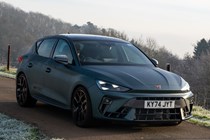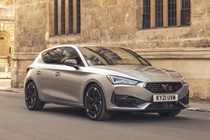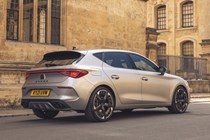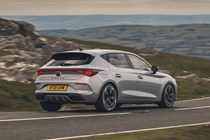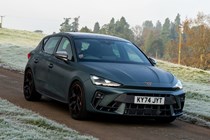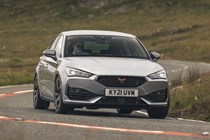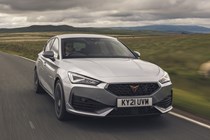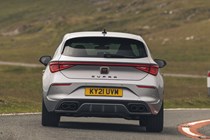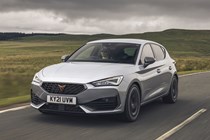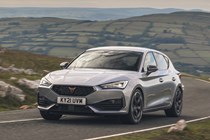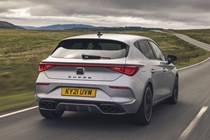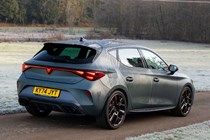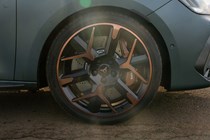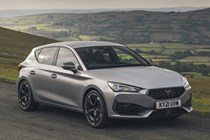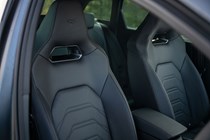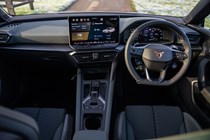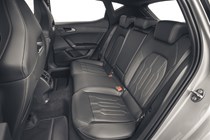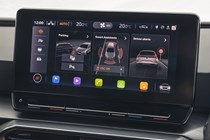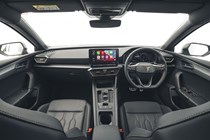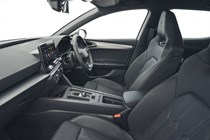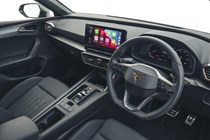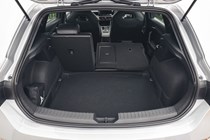
Cupra Leon engines, drive and performance

- 300hp model is the most exciting by far
- 150hp version doesn’t feel fast enough
- PHEV disappoints due to its extra weight
Petrol engines
Cupra slimmed down the Leon’s petrol engine range for the facelift. If you don’t want a PHEV or an estate, you’re now limited to just two four-cylinder options – a 150hp 1.5-litre or the 300hp 2.0-litre four-cylinder from the Volkswagen Golf GTI Clubsport.
We’d heartily recommend the 1.5-litre in the standard SEAT Leon, but it feels out of place in what’s supposed to be a sporty hatch. When teamed with the Cupra’s stiffer chassis, it always feels a little breathless and underpowered.
Still, if you’re more interested in looking fast than going fast, we suggest you stick to the standard six-speed manual rather than opting for the mild-hybrid assisted automatic. It’s cheaper to buy, more fun to own and barely any less efficient in the real world.
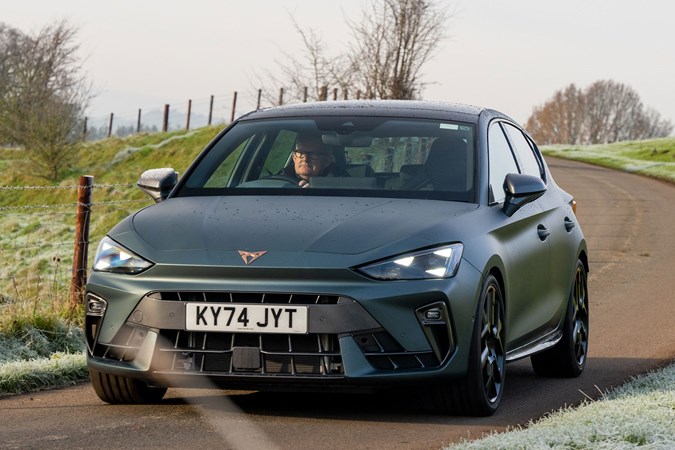
There used to be a broad range of 2.0-litre four-cylinder petrol engines in the Leon’s mid-range, with power outputs stretching from 190hp to a whopping 300hp. Now, only the most potent model has survived, which is no bad thing because it’s by far the most exciting.
If you can get that tower of power down to the Tarmac cleanly (which is difficult in anything other than perfect conditions), it’ll thrash from 0–62mph in 5.7 seconds. That’s only a second behind the Golf R – and that has an extra 33hp and four-wheel drive. What’s more impressive is the Leon is only 0.3 seconds behind the Honda Civic Type R.
Plug-in hybrids
There are two options here – one with 204hp and one with 272hp. Both use the most basic Leon’s 1.5-litre petrol engine as their starting point, to which Cupra has bolted a 116hp electric motor and a 19.7kWh battery pack.
The battery pack is considerably larger than the pre-facelift car’s 12.8kWh unit and, as such, Cupra reckons the Leon PHEV can now cover between 74 and 80 miles on electric power alone, compared to the 32 miles you got from the old car.
This all sounds great, right? More power, better fuel economy and enough battery power to get to and from work without burning any fuel.
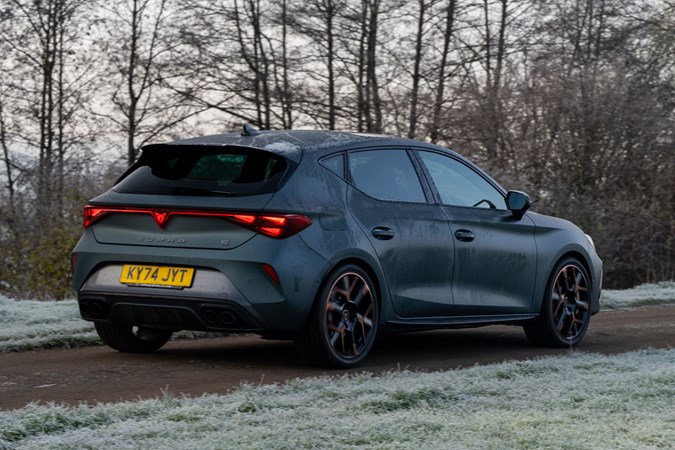
Sadly, the tech doesn’t work as well in the real world. Cupra’s 700mpg-plus fuel economy figures are wildly exaggerated, you’ll struggle to do more than 50 miles in EV mode and the electrical gubbins increase the Leon’s kerb weight by a rather troubling 200kg to 1,673kg.
That much extra weight has a profound effect on the Leon’s performance. It’s brisk enough in a straight line, but only when the petrol engine and electric motor are working together.
Allowing the battery to run empty will seriously flatten out both powertrains’ acceleration, as the engine (which only produces 150hp in the cheaper model and 177hp in the more expensive variant) needs to work harder to haul around the dead weight of the hybrid system.
What’s it like to drive?
- 300hp model is a riot
- Sharp handling, great diff
- PHEV feels a little heavy
The pure-petrol models are great. The 150hp 1.5-litre version isn’t particularly powerful, but it has weight and grip on its side. It tips the scales at 1,373kg – and it has wide tyres and a supple chassis, all of which means you can hustle it very quickly down a twisty road.
The 300hp Cupra Leon is even better. It’s fitted with a locking differential that will send the power to the inside wheel to drag the car towards the apex of the corner. Team that with Cupra’s adaptive dampers (which do a great job of eliminating body roll), and you’ll find you can carry utterly obscene speeds into bends. In fact, we reckon it’d give the Honda Civic Type R a run for its money on the right road, despite the fact it has 25hp less.
However, that’s only if the weather is clear. Try and use the power on anything other than a bone-dry summer’s day and you’ll roast the front tyres. When we first hopped behind the wheel of the Leon, we left a greasy junction a little too exuberantly and the front wheels thrashed around in the wheel arches through first, second and third gear. It’s utterly hilarious if you’re prepared for it.
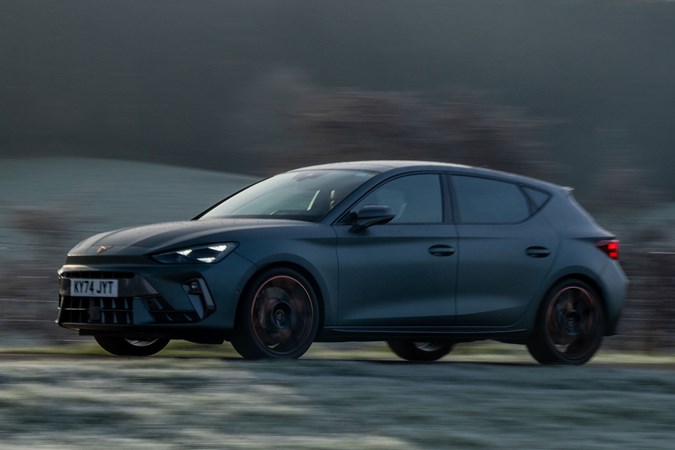
It seems to have a slightly harsher edge than the equivalent Golf, too. The damping, steering and brakes are all slightly heavier than the GTI’s, and its gearbox shifts with greater ferocity. We found it refreshing to spend some time with a hot hatch you need to grab by the scruff of the neck and drive. For us, though, the Honda Civic Type R still delivers a more exciting experience. It’s much more communicative.
The PHEV-powered Leon e-Hybrid isn’t anywhere near as exciting, primarily because of the extra weight. It’s best thought of as a slightly sportier version of the SEAT Leon with tighter body control, rather than a fully fledged hot hatchback. The added bulk dulls the car’s cornering ability, producing more body roll.


